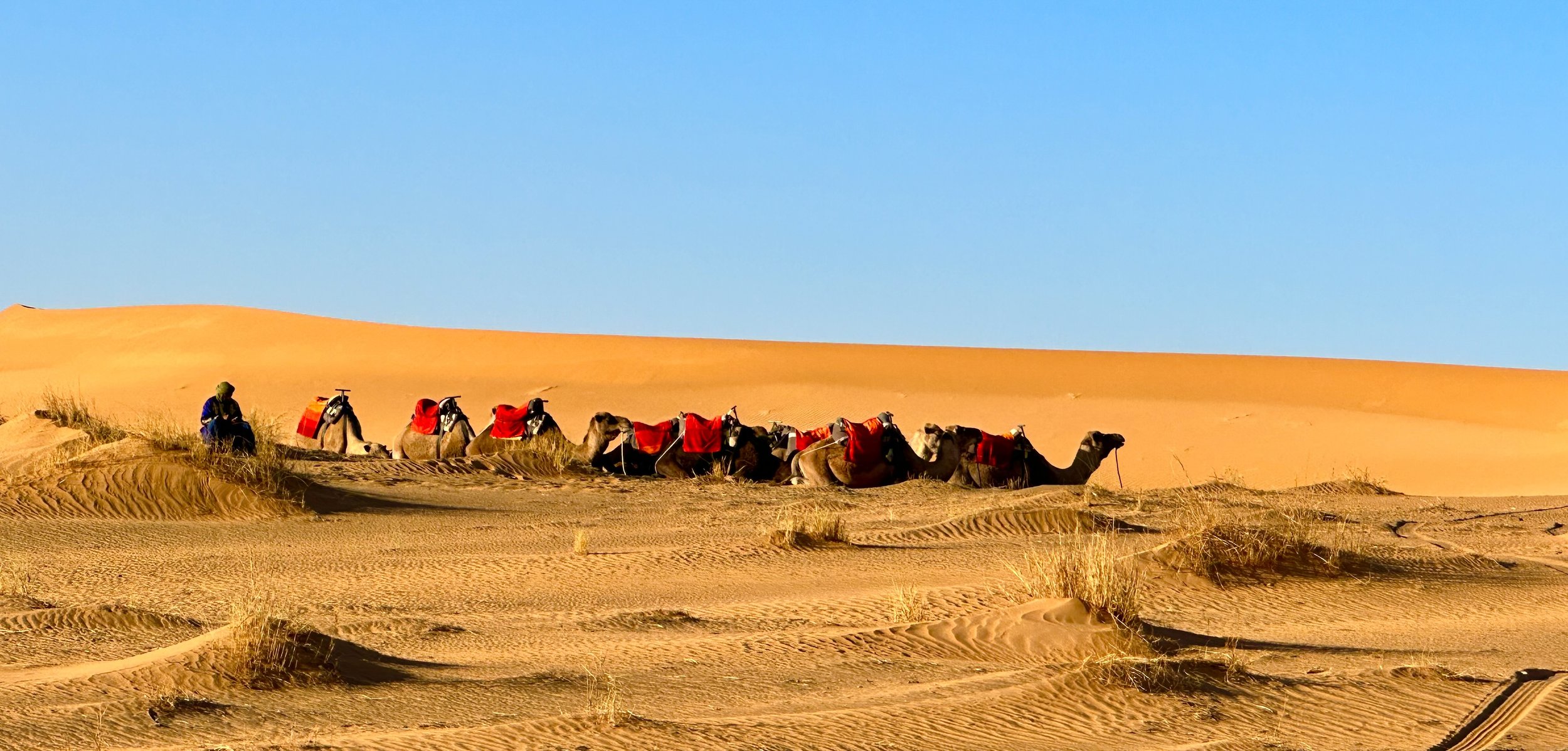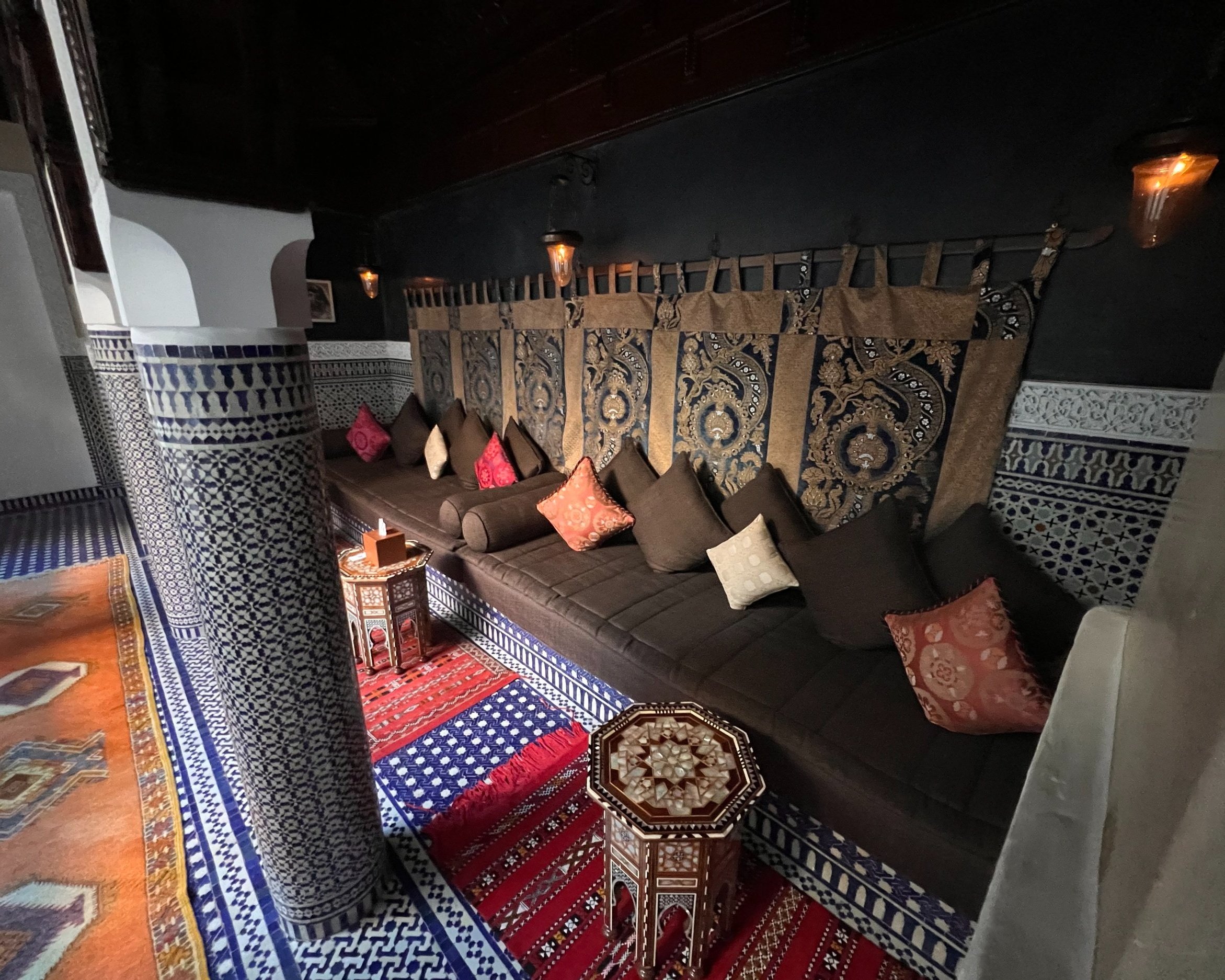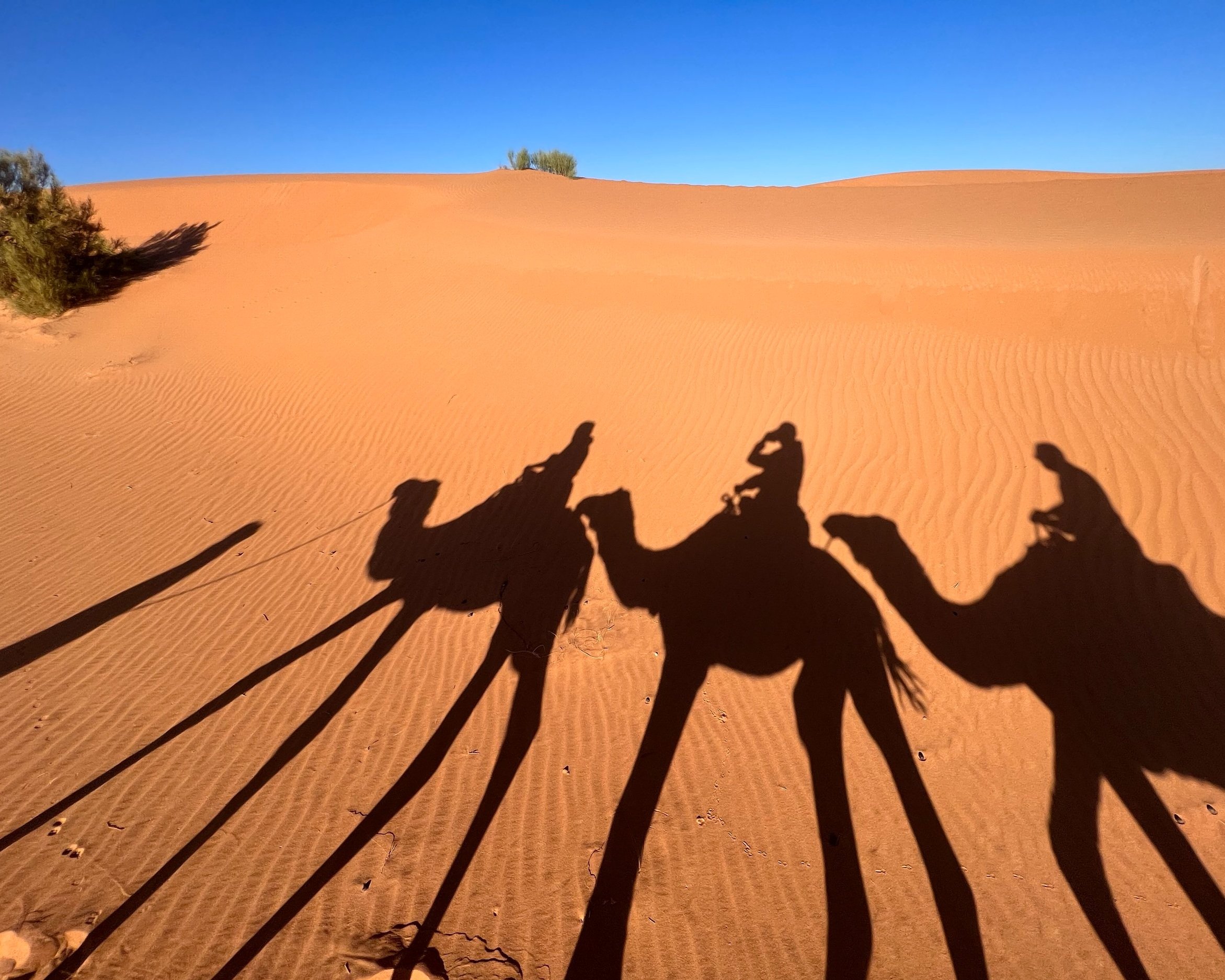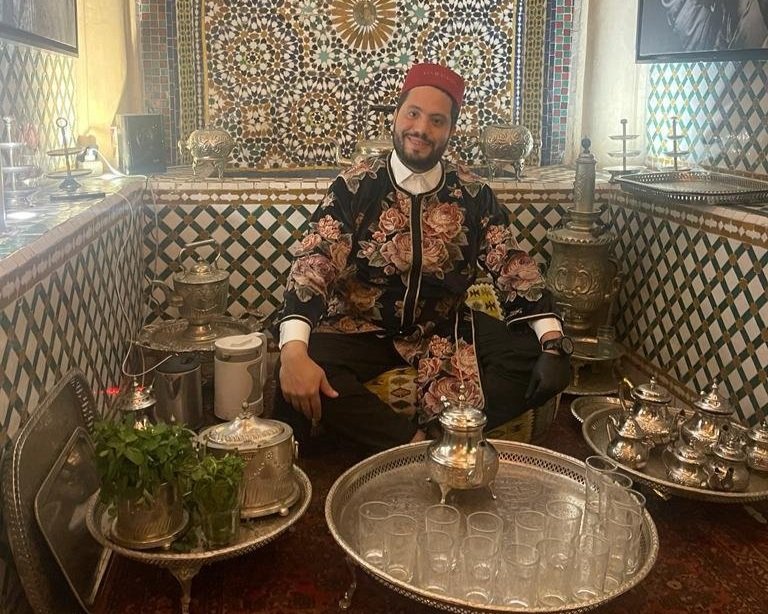
Morocco
Marrakesh, Atlas Mountains, Quarzazat, Merzouga, Erfoud, Fes, Rabat, Casablanca
16 days
DAY 1
Marrakech
Arrive in Marrakech where you will be met by a JoYOUs Journey partner. Transfer to your hotel. Immaculately refurbished in traditional Moroccan style, La Villa Des Orangers is a riad-style hotel located just minutes from the hive of activity of Jemaa el Fna Square, boasting panoramic views of the surrounding medina. The riad's stately lounges and elegant salons recreate the atmosphere of old Marrakech, with luxuriant fabrics and crackling log fires. The focal point of this inviting property is a central courtyard shaded by the eponymous orange trees,. All of the superbly appointed bedrooms and suites are decorated in warm hues and open onto shared courtyards or feature individual roof terraces.
DAY 2
Marrakech
Explore the hidden wonders of Ochre City accompanied by your guide. From intriguing historical sites to the bustling alleyways of the Medina, Marrakech is sure to mesmerize you with its fascinating history and local culture.
Discover the labyrinthine souks, traditionally dominated by the sale of textiles, clothing, and Moroccan handicrafts. This maze of colorful alleys and small squares is home to a bewildering array of stalls and ateliers devoted to specific crafts. Next, explore Jemaa El Fna, the city's main square, which is home to a multitude of street artists and food stalls. Continue on to the Koutoubia Mosque, an emblem of Marrakech: while it is not possible to enter the mosque, its beauty can be admired from the gardens and the square.
Formally the private residence of Thami El Glaoui (who ruled over Marrakech from 1912 to 1956), Dar El Bacha Palace has historically hosted magnificent celebrations and receptions in the presence of the Greats of this world, including Winston Churchill and Jacques Majorelle. After several years of heavy rehabilitation work, the palace was reopened by His Majesty King Mohamed VI in 2017. The colorful, geometric tiles, painted ceilings, and carved cedarwood are an exhibition on their own. The palace also boasts an area for the Art of Islam, an international collection of Patty Cadby Birch that represents the four continents as well as a private, temporary, exhibition space.
DAY 3
Marrakech
Known for its sunny weather almost all year, Marrakech is home to some of the most beautiful gardens of the Kingdom as it is essential to cool down during the hot summer days. Today, enjoy a lazy stroll through the exotic green oasis of Ochre City to relax from the bustling souks of the Medina and discover this particular “artsy” side of the Kingdom.
Visit the beautiful Majorelle Gardens, originally designed in 1924 by French artist Jacques Majorelle. After taking up residence in Marrakech, Majorelle transformed the property's existing garden into a tropical paradise, surrounded by vivid cobalt blue buildings with verdant exotic groves, lily-covered pools, and enormous sculptural cactuses. These peaceful garden settings offer a variety of exotic plants such as bamboo, cacti, bougainvillea, and palms. Streams and fish-filled pools also flow through the tranquil gardens.
Next is the Yves Saint Laurent Museum, where the most precious YSL works are gathered. Yves Saint Laurent and Pierre Bergé fell in love with the colors of Marrakech and therefore resided here for some of the most beautiful years of their lives. The Museum, a 43,000-square-foot building, was designed by the Paris-based firm Studio KO. Inspired by the contemporary and Moroccan architecture.
DAY 4
Marrakech
Enjoy your day at leisure with guide and vehicle at your disposal.
DAY 5
Atlas Mountains
Today, unearth another side of Morocco, the gorgeous Atlas Mountains. North Africa's greatest mountain range, and experience two different worlds: traditional Berber and modern luxury.
Along the way, admire the stunning views of the mountains and the little Berber villages nestled in the hills. Discover the villages of Asni and Imlil in the foothills of Djebel Toubkal, the highest mountain in the Atlas Mountain range.
DAY 6
Atlas Mountains
Upon your arrival in Imlil, embark on a journey to discover the fascinating Berber culture. Berbers are the original inhabitants of North Africa, and they are composed of several tribes scattered throughout the region. Known as very proud and hard-working people, they have their own dialect, customs and traditions. Along a narrow road, arrive at a village located on a small hill, where you are met by a local family and welcomed into their home. While visiting their humble house, you are shown the traditional oven in which Berber bread is cooked. Savor a sample of this fresh bread, accompanied by a refreshing mint tea as your host enlightens you, with the help of your guide, with tales of their family, history and culture.
At the end of your experience enjoy your Berber lunch with the family before heading back to your hotel.
DAY 7
Ouarzazate
Today travel overland to Ouarzazate. The city was once a stopping point for African traders en route to the cities of Morocco and Europe. Ouarzazate was built as a French garrison in the 1920s. It is a regional trade center known for pottery and carpets.
As your journey continues, take note of the picturesque villages, passing by travelers going from one village to the next on foot. Admire the lush green eucalyptus trees, contrasting the red hue of the rocky hills. Notice the exotic smell of chwaya (grilled meat) and Berber tagines, beautifully displayed with a tomato on the top.
DAY 8
Ouarzazate
Today, continue to discover Ouarzazate and its region with your private vehicle and guide. Drive to one of the most spectacular A villages; Aït Benhaddou. The village has been declared a World Heritage Site by UNESCO. Some of the world’s most decorative Kasbahs are found here, with houses seeming to defy gravity as they cling to the steep slopes.
The town and surrounding area is also a note-worthy film-making location, with Morocco& biggest studios inviting many international film companies to shoot their films, such as Lawrence of Arabia (1962), Star Wars (1977), The Living Daylights (1987), The Last Temptation of Christ (1988), The Mummy (1999), Gladiator (2000) and Martin Scorsese's Kundun (1997).
DAY 9
Merzouga
Today your journey continues through the majestic sceneries of Southern Morocco. Pass by the
picturesque and densely planted Skoura palm grove and continue to the Valley of a Thousand
Kasbahs. On both sides, magnificent Kasbahs made in pie architecture are decorated with bold
geometric patterns and represent one of the Berber’s most beautiful heritages.
From Skoura, drive eastwards towards Kelaa El Mgouna, the Valley of Roses". The region
boasts the largest cultivation of Persian roses where local factories use it to produce rosee
ssence and flavored creams used to soften the skin. Next, reach the impressive Dades Valley
with its high cliffs of limestone, beautiful palm trees, and narrow river before continuing across
Tinghir and venturing into the Todra Gorges to admire its gigantic rock walls and even more
impressive palm grove that hides a flowing river. The desert area of Morocco was a sea.
Merzouga will welcome you with gold-colored sand dunes and open up as the gateway to theThe
Sahara Desert.
DAY 10
Erfoud
Today, discover the Tafilalet region, famous for its savory dates and gorgeous sceneries. Your sightseeing includes a visit to Rissani, the last visible point of the Ziz River, which from the 8th to the 14th century was the site of the first independent kingdom of the south. While in Rissani, stroll in the centuries-old palm grove and discover beautiful Ksars still standing in all their glory. Next, visit the quarry, where fossilized fish have been discovered. From there, head south while traveling by four-wheel drive vehicle amongst the desert dunes of Erg Chebbi en route to your tented campsite. The desert is rocky, to begin with, like a drum roll preparing you for the upcoming Sahara dunes that you can distinguish in the distance.
DAY 11
Fes
Today, depart overland to Fes, considered the intellectual heart of Morocco. At its core is the world’s largest university, the Karaouine, which is still considered one of the greatest Islamic schools in the Arab world. Fes is divided into three towns, Fes-el-Bali (old Fes), Fes-el-Jdid (new Fes), and the French-built Ville Nouvelle. The city itself is a unique historical monument with a medieval medina that has barely changed in over 500 years.
DAY 12
Fes
Take a step back in time to the Middle Ages with a visit to Fes El Bali, the world's largest living medieval medina city and the cultural heart of Morocco. Explore some of the 9,000 narrow lanes, alleys, and souks that make up the labyrinth of the city’s old quarter. The medieval Medina is also a UNESCO World Heritage Site.
Head to a riad style shop in the medina for a demonstration of antique Moroccan rugs sourced from all over the country, sit back and enjoy a refreshing mint tea while your host presents you with the variety of carpets and explains the history and weaving styles of each region.
DAY 13
Rabat
Today depart overland to Rabat, the capital of the Kingdom of Morocco and the seat of its government, situated at the mouth of the River Bou Regrag, opposite the city of Sale. It boasts several historical monuments including the Hassan Tower and the gorgeous Oudaya Kasbah.
Although it’s not the most obvious choice, Morocco is considered to have the best natural potential for producing high-quality wines, due to its high mountains and the cooling influence of the Atlantic. Today you have the opportunity to visit a stunning vineyard located between the foothills of the Rif, the Middle Atlas Mountains between the Atlantic Ocean and the Mediterranean Sea. This area has been known for producing wines powerful, full-bodied, fruity, and expressive wines for over 2,000 years.
DAY 14
Rabat
Today, embark on a city tour that highlights Rabat’s cultural influences and the superbly preserved relics of its Moorish past. Rabat is the political capital of the Kingdom and is situated at the mouth of the River Bu Regrag, opposite the city of Sale. It boasts several historical sites flanked by wide avenues and lush parks. Rabat’s most famous site is the 12th Century Hassan Tower, an excellent example of Moorish architecture that stands over an incomplete mosque.
Finally, visit the Mohamed VI Museum of Modern Contemporary Art, a great introduction to Moroccan history and contemporary Moroccan artists.
DAY 15
Casablanca
Today you will depart overland to Casablanca. The name Casablanca evokes thoughts of good living, romance, and adventure in a tropical setting, an image that the 1943 Humphrey Bogart film conveyed to cinema during World War II. Originally settled by Berbers in the 7th century,
Casablanca’s fairly recent growth has made it the bustling, French-influenced business center of Morocco it is today.
















